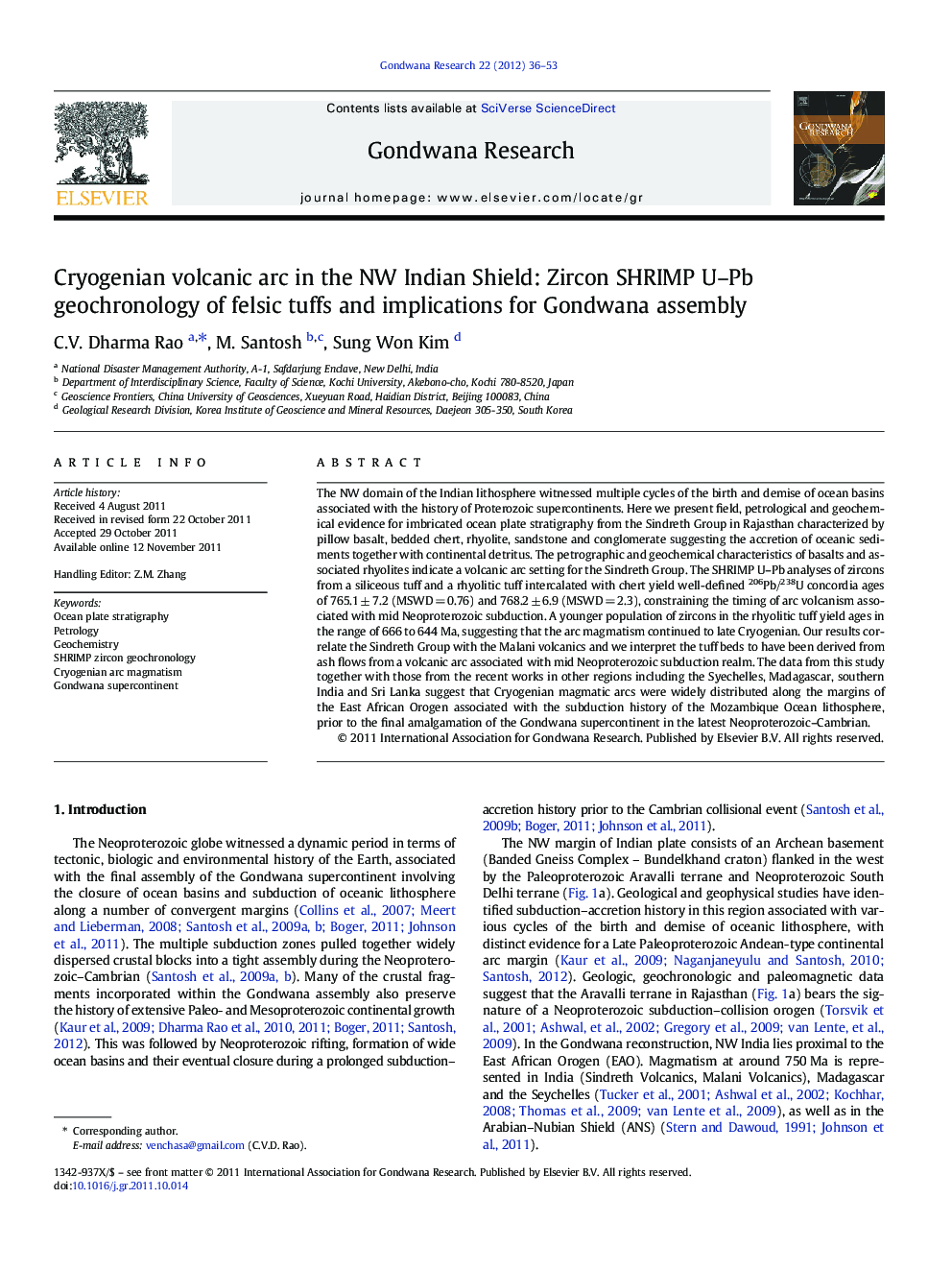| Article ID | Journal | Published Year | Pages | File Type |
|---|---|---|---|---|
| 4726745 | Gondwana Research | 2012 | 18 Pages |
The NW domain of the Indian lithosphere witnessed multiple cycles of the birth and demise of ocean basins associated with the history of Proterozoic supercontinents. Here we present field, petrological and geochemical evidence for imbricated ocean plate stratigraphy from the Sindreth Group in Rajasthan characterized by pillow basalt, bedded chert, rhyolite, sandstone and conglomerate suggesting the accretion of oceanic sediments together with continental detritus. The petrographic and geochemical characteristics of basalts and associated rhyolites indicate a volcanic arc setting for the Sindreth Group. The SHRIMP U–Pb analyses of zircons from a siliceous tuff and a rhyolitic tuff intercalated with chert yield well-defined 206Pb/238U concordia ages of 765.1 ± 7.2 (MSWD = 0.76) and 768.2 ± 6.9 (MSWD = 2.3), constraining the timing of arc volcanism associated with mid Neoproterozoic subduction. A younger population of zircons in the rhyolitic tuff yield ages in the range of 666 to 644 Ma, suggesting that the arc magmatism continued to late Cryogenian. Our results correlate the Sindreth Group with the Malani volcanics and we interpret the tuff beds to have been derived from ash flows from a volcanic arc associated with mid Neoproterozoic subduction realm. The data from this study together with those from the recent works in other regions including the Syechelles, Madagascar, southern India and Sri Lanka suggest that Cryogenian magmatic arcs were widely distributed along the margins of the East African Orogen associated with the subduction history of the Mozambique Ocean lithosphere, prior to the final amalgamation of the Gondwana supercontinent in the latest Neoproterozoic–Cambrian.
Graphical abstractFigure optionsDownload full-size imageDownload as PowerPoint slideHighlights► Evidence for imbricated ocean plate stratigraphy identified from the Sindreth Group. ► Zircons in tuff yield zircon SHRIMP 206Pb/238U concordia ages of 765 and 768 Ma. ► Cryogenian arc related to subduction associated with Gondwana assembly.
